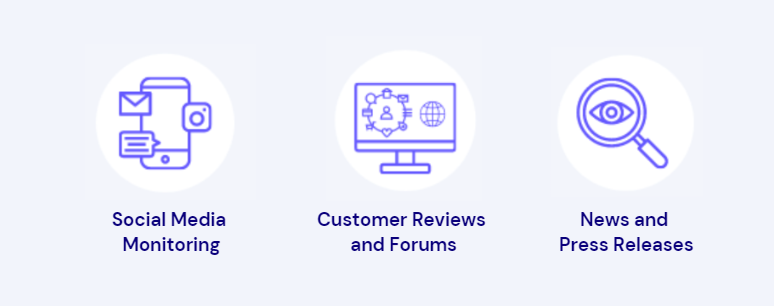To gain a competitive edge, it’s essential to understand not only your own strengths and weaknesses but also those of your competitors. This is where Conversational AI can be a game-changer. By harnessing the power of natural language processing and machine learning, you can extract valuable insights from conversations happening across the digital landscape.
Competitive analysis involves the systematic collection and evaluation of data about your competitors, with the aim of gaining a deeper understanding of their strategies, strengths, and weaknesses. Traditional methods often rely on market research, surveys, and competitor websites. What uses can we give the AI to help us with this task? Let’s see:
Step 1: Data Collection and Monitoring
To start using Conversational AI for competitive analysis, you need data. Fortunately, this technology can automate data collection, saving you countless hours of manual work. Here’s how:

- Social Media Monitoring: Set up Conversational AI to monitor your competitors’ social media channels. Track their posts, comments, and engagement metrics. You’ll gain insights into their content strategy, customer sentiment, and audience demographics.
- Customer Reviews and Forums: Monitor online review platforms and industry-specific forums. Conversational AI can help identify trends, customer pain points, and competitive advantages mentioned by users. This information can be invaluable for refining your own offerings.
- News and Press Releases: Stay updated with your competitors’ latest developments by setting up alerts for their mentions in news articles and press releases. Conversational AI can notify you in real-time when something significant happens in your industry.
Step 2: Sentiment Analysis
Now that you have a steady stream of data, it’s time to extract meaning from it. Conversational AI can perform sentiment analysis to gauge public opinion about your competitors. Here’s how:
- Positive vs. Negative Sentiment: Analyse the sentiment of online conversations about your competitors. Are customers praising their products or complaining about them? Identify areas where your rivals excel and where they fall short.

- Sentiment Trends: Track sentiment trends over time. Are your competitors improving or deteriorating in the eyes of their customers? A declining sentiment might indicate an opportunity for your business to swoop in.
Step 3: Competitor Benchmarking
To outperform your competition, you need to benchmark your performance against theirs. Conversational AI can assist with this process:
- Product and Feature Comparison: Analyse conversations related to your competitors’ products and features. Are there features customers love that you could implement or improve upon in your own offerings?
- Pricing and Promotions: Monitor discussions about pricing, discounts, and promotions. Are your rivals undercutting you, or can you offer a better deal? Adjust your pricing strategy accordingly.
- Customer Support and Feedback: Evaluate how your competitors handle customer support. Are there recurring issues they struggle to address? Use this information to enhance your customer support and gain a competitive edge.

Step 4: Predictive Analysis
Conversational AI isn’t just about gathering historical data—it can also predict future trends and actions:
- Trend Analysis: Identify emerging trends and market shifts by analysing conversations and customer inquiries. Stay one step ahead of your competitors by adapting to changing customer needs.
- Competitor Behavior Prediction: Based on historical data, Conversational AI can predict your competitors’ likely responses to market changes. Use these predictions to plan your own strategic moves accordingly.
Step 5: Actionable Insights
Lastly, all this data is useless without actionable insights. Conversational AI can help distill the information into actionable recommendations:
- Automated Reporting: Set up automated reports that summarise key findings and trends. This saves time and ensures that decision-makers have the information they need when they need it.
- Strategy Adjustment: Use the insights gained from Conversational AI to fine-tune your marketing, product development, and customer service strategies. Stay agile and responsive to maintain your competitive edge.

In conclusion, Conversational AI is a game-changer when it comes to competitive analysis. By automating data collection, sentiment analysis, benchmarking, predictive analysis, and providing actionable insights, it empowers businesses to make informed decisions and stay ahead of the competition.
Incorporating Conversational AI into your competitive analysis toolkit can give you a significant advantage in today’s dynamic business landscape. Embrace this technology, and you’ll be better equipped to thrive in an ever-evolving market. Stay competitive, stay informed, and let Conversational AI be your secret weapon.


